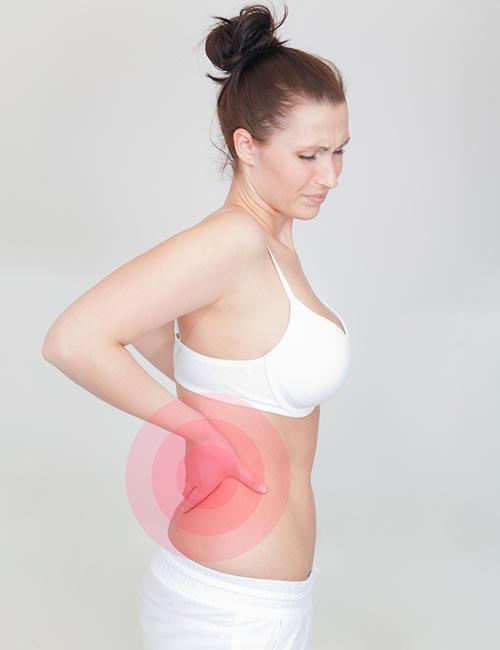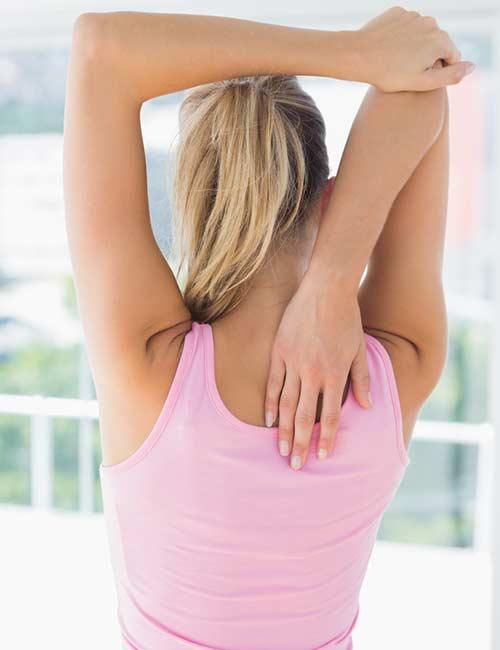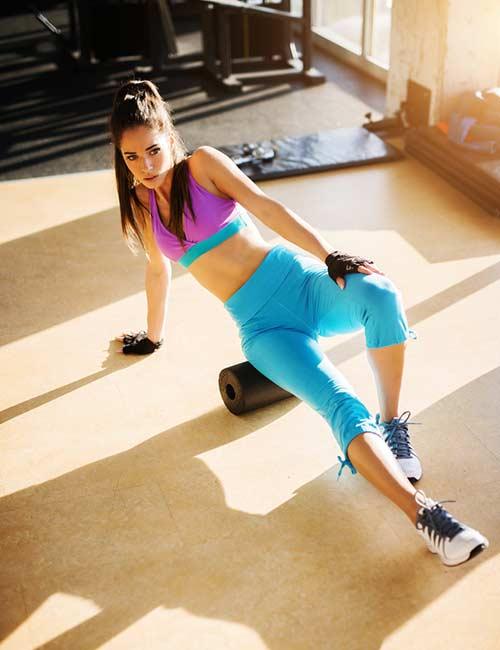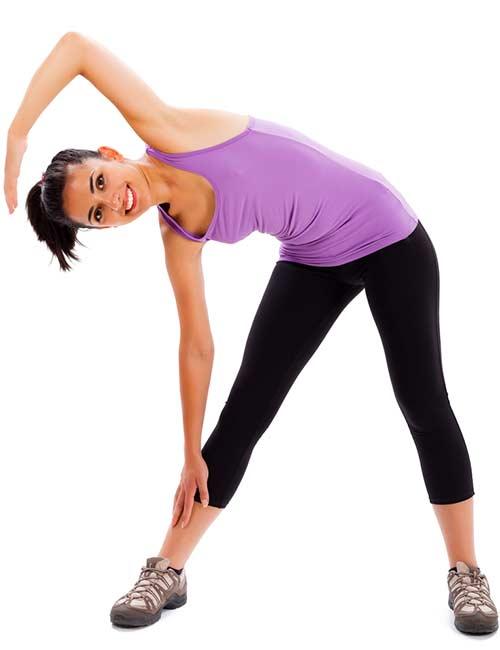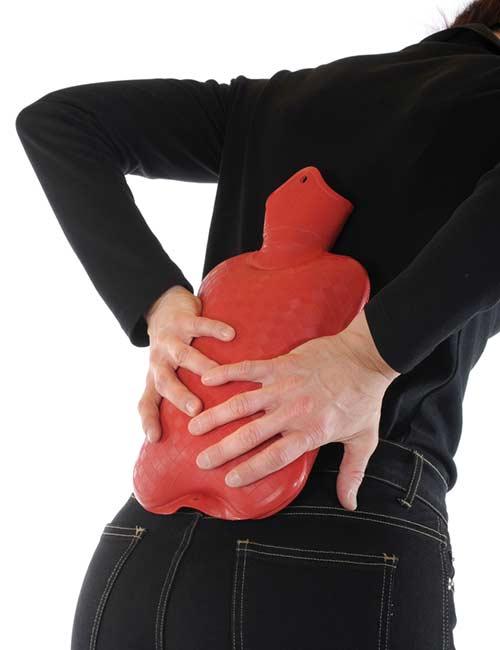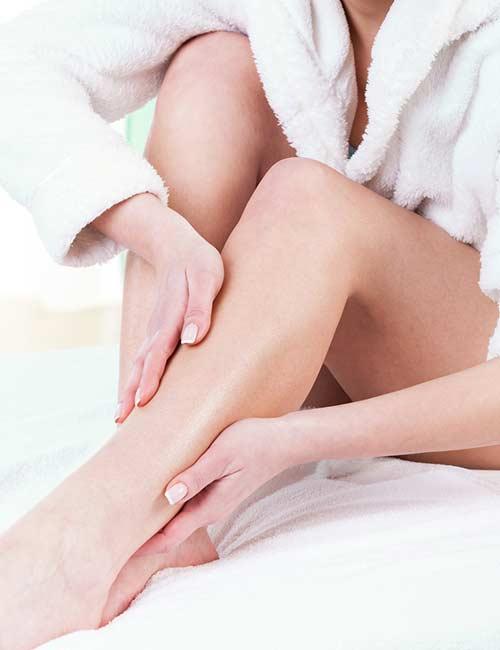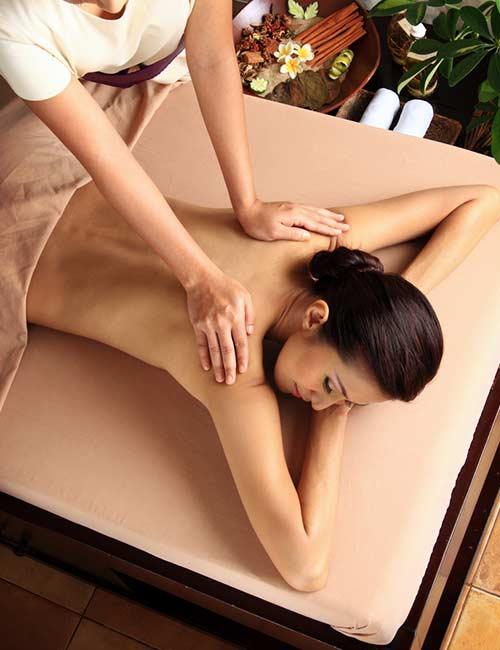Charushila Biswas
A sore muscle is the aftermath of a vigorous or new workout. It is your body’s way of telling you that you need to take rest to help your muscles recover and rebuild themselves. But sometimes, just rest (and BenGay) is not enough. You need to treat the sore muscle with care to avoid further complications. In this article, I will discuss 12 ways to treat sore muscles at home. But first, let me answer a few basic questions about sore muscles and how they happen. Swipe up!
What Are Sore Muscles?
According to Samantha Clayton, Olympic sprinter and coach at Pepperdine University, fitness-related muscle soreness is called Delayed Onset Muscle Soreness (DOMS). It is caused due to microscopic tears in your muscles and sets in after a day or two of intense exercising. But it can also happen right after exercising if you are new or took a long break.
The muscle wear and tear occurs due to constant contraction and relaxation at high intensity and also because your body is not conditioned enough to take on so much stress. You know your muscles are sore when you experience stiffness, swelling, muscle weakness, and tenderness. If you find it difficult to breathe and your neck become stiff, see a doctor immediately.
Now, let me tell you about the various ways to get rid of muscle soreness. Scroll down.
12 Ways To Get Rid Of Sore Muscles
There are various ways to get rid of sore muscles at home. By treating your muscles before things become complicated, you will be able to recover and help them rejuvenate quickly. Here are 12 ways to go about it.
1. Stretch
The first and foremost thing to do if you experience muscle soreness is to stretch. That’s because when you workout, the muscles contract. Rigorous workout sessions or a new type of workout can lead to muscle tear and prevents the muscles from relaxing. Therefore, they remain contracted, causing more pain and discomfort. So, you MUST stretch or cool off right after your workout e.v.e.r.y.d.a.y.
If you still have muscle pain, use a medicine ball and take help of your trainer or workout friend to help you stretch your entire body (especially the abs and lower back region) instead of following a rigorous workout session for a day or two.
2. Foam Roll
Foam rollers are cylindrical self-massage tools that help relieve muscle soreness. You must spend at least 15 minutes massaging your sore areas using these affordable and effective rollers. To know how to use them, click here.
3. Ice It
One of the reasons your muscles become sore is inflammation. Icing your sore muscles can help reduce the inflammation. Get an ice pack from a nearby pharmacy, wrap it in a cloth, and gently press it on the affected area. Make sure not to keep the ice pack on for too long.
4. Take A Warm Water Bath
It is as relieving as a foot soak. A warm water bath works like magic when it comes to reducing muscle soreness. The warmness of the water helps release the tension in the muscles, which reduces the swelling and pain. You can add Epsom salt and/or essential oils to make your warm bath a real indulgence.
5. Consume Anti-Inflammatory Foods
Healing from within is as necessary as foam rolling and taking a warm water bath. Consume anti-inflammatory foods like salmon, tuna, herring, mackerel, sardines, fish oil, dark leafy greens, fruits, coconut water, and yogurt. If you are not a fish lover, you can take fish oil supplements.
6. Warm Up Before Exercising
Warming up before exercising is very, very important. When you don’t warm up and start vigorously exercising, the muscles do not expand and contract as much and are more prone to a muscle tear. This, in turn, leads to sore muscles. Therefore, take 10 minutes to warm up from head to toe, no matter whether you are working out at the gym or home.
7. Use Heat Pads
A heating pad or a hot water bag helps relieve the strain on the muscles. It also reduces inflammation and soothes the muscles. You can alternately use heat pads and ice packs to get quick relief.
8. Rest
Working out to get a slim waist? You will, but it will take a little more time than just one day. If you have soreness in your muscles, give them the rest they are screaming for. When you rest, your muscles get the time to recover from the wear and tear. In fact, it is only when you rest that the muscles build themselves bigger and stronger.
9. Do Light Exercises
This includes warm-up exercises, stretching, and yoga. No cardio or strength training the day after or the next. Doing light exercises will prevent your muscles from remaining contracted. Moving lightly will give you the required full body and deep tissue stretch, thereby helping your muscles heal quickly.
10. Massage Your Sore Spots
Foam rolling does an amazing job of massaging your body. But there are areas that you may not be able to massage with it. Or maybe you are not flexible or have enough strength to use a foam roller effectively. So, an alternative to this is to massage your sore spots with the lower part of your palm, knuckles, or fingers. Apply light to medium pressure and use circular, horizontal, or vertical motions to help relax the muscles.
11. Get A Professional Massage
Isn’t that the best thing to do? Yes, just the sound of it is so relaxing. If you are in so much pain that you cannot move, stand up straight, or sit down, it’s time to get some professional massage. The massage therapists are experts in relieving sore muscles and can help you heal faster. Make sure you share your problem with the therapist before beginning the massage.
12. Eat Right
Last, but not the least. What you consume determines how fast your body recovers. So, eating right is the key to quick recovery. You must include sources of lean protein like chicken breast, fish, ground turkey, mushroom, tofu, lentils, and beans in your diet. Consume veggies, fruits, dairy, nuts, and seeds to provide balanced nutrition to your body. Drink adequate amounts of water. Water helps flush out the toxins and maintain homeostasis and internal pH, thereby helping reduce inflammation and swelling.
These are the 12 ways in which you can get rid of sore muscles after working out.
Now, let me answer a few questions to help clear your doubts.
Is it safe to exercise with DOMS?Â
Yes, you can do light stretches, warm-ups, and yoga during this time. Make sure to take help of your trainer or a friend when you exercise.
Will I keep getting DOMS?
It depends on how much you exercise, warm-up time, foods you eat, and the exercise form.
Why is exercise form important?
Doing many sets and reps in the wrong form brings their count to zero. Exercise form is extremely important. It will prevent you from activating the wrong muscles, thus reducing the chances of muscle injury. Also, take care of how you breathe when you work out.
Should you take painkillers to relieve muscle soreness?
Try the different ways mentioned above to prevent muscle soreness. If these don’t work, you must see a doctor who will prescribe medicines for you. You can also apply a pain relieving spray for temporary relief.
To conclude, muscle soreness should not be ignored. Working out should be a part of your lifestyle, but you should also take the required measures to help your body cope with the exercise intensity levels. Try these methods to get rid of sore muscles after working out and live a pain-free, healthy life. Cheers!

